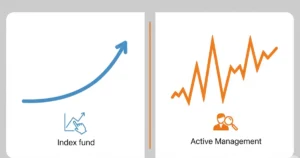Are you thinking of investing but don’t know where to begin? Starting a SIP (Systematic Investment Plan) in mutual funds online is one of the smartest and simplest ways to grow your wealth. Whether you’re saving for your dream home, child’s education, or just looking for long-term financial security, SIPs offer a flexible and disciplined approach to investing.
In this article, we’ll guide you through how to start SIP in mutual funds online, even if you’re a complete beginner.
What is SIP and Why Should You Start One?
Before we jump into the process, let’s quickly understand what SIP is.
A SIP is a method of investing a fixed amount in mutual funds at regular intervals – monthly, quarterly, or even weekly. Instead of putting a large sum at once (lump sum), SIP allows you to invest smaller amounts regularly, making investing affordable and less risky.
Key Benefits of SIP:
- Affordable Investing: Start with as low as ₹500 per month
- Power of Compounding: Earn returns on your returns over time
- Rupee Cost Averaging: Helps reduce risk from market volatility
- Financial Discipline: Encourages regular saving habits
How to Start SIP in Mutual Funds Online
Here’s a simple process you can follow to start your SIP journey today:
1. Get Your KYC Done
Before investing in mutual funds, you need to complete Know Your Customer (KYC) compliance. This is a one-time process.
You’ll need:
- PAN card
- Aadhaar card
- A passport-sized photo
- A live video verification (for online KYC)
Most mutual fund platforms or apps offer paperless eKYC. It usually takes a few minutes to complete.
2. Choose a Reliable Investment Platform
You can invest directly through:
- AMC (Asset Management Company) websites (like SBI Mutual Fund, ICICI Prudential, HDFC MF)
- Third-party apps and portals (like Groww, Zerodha Coin, ET Money, Paytm Money)
Tip: Third-party platforms are beginner-friendly and offer easy comparison tools.
3. Select the Right Mutual Fund
Now comes the most important step – choosing the right mutual fund.
Ask yourself:
- What is your investment goal? (e.g., retirement, wealth creation, child’s education)
- What is your risk appetite? (low, moderate, high)
- What is your investment horizon? (short-term or long-term)
You can choose from:
- Equity Mutual Funds – high risk, high return (ideal for long-term)
- Debt Funds – low to moderate risk (good for short to medium term)
- Hybrid Funds – mix of equity and debt (balanced option)
Use online platforms to compare returns, ratings, fund managers, and expense ratios.
4. Decide the SIP Amount and Frequency
Most SIPs start at ₹500 per month. You can increase or pause anytime.
Choose:
- Amount (based on your budget)
- Frequency (monthly is most common)
- Start date
You can also use SIP calculators online to estimate how much you need to invest to reach your goals.
5. Set Up Auto-Debit Mandate
To make things seamless, authorize your bank account to auto-debit the SIP amount every month. This can be done via:
- Netbanking (e-Mandate)
- UPI
- NACH form (for offline)
Once the mandate is set up, your SIP will run automatically.
6. Track and Monitor Your SIP
After starting, regularly monitor your SIP performance. But don’t panic if the market fluctuates – SIPs are meant for long-term growth.
You can:
- Check monthly statements
- Use mobile apps to track performance
- Rebalance or switch funds if needed
Final Tips Before You Start
- Start early: The sooner you start, the more you benefit from compounding.
- Stay consistent: Avoid stopping SIPs during market downturns.
- Review yearly: Reassess your goals and make adjustments accordingly.
- Avoid frequent switching: Let your funds perform over time.
Conclusion
Starting a SIP in mutual funds online is easier than ever, thanks to digital platforms and simplified processes. With just a few documents and a small amount of money, you can begin your investment journey and work towards financial independence.

